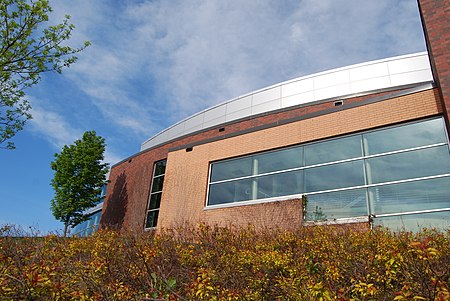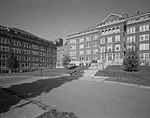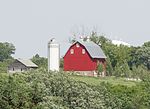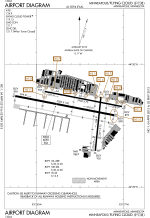Eden Prairie High School
1981 establishments in MinnesotaEden Prairie, MinnesotaEducational institutions established in 1981Public high schools in MinnesotaSchools in Hennepin County, Minnesota ... and 2 more
Use American English from June 2019Use mdy dates from February 2023

Eden Prairie High School (EPHS) (formerly Eden Prairie Senior High School) is a four-year public high school in Eden Prairie, Minnesota, United States established in 1923. The present high school opened in 1981 and was significantly added to in 1990, 1994 and 1997. It was named a Blue Ribbon School of Excellence in 1996 by the United States Department of Education. Eden Prairie High School is accredited by the North Central Association of Colleges and Secondary Schools and the Minnesota Department of Education.
Excerpt from the Wikipedia article Eden Prairie High School (License: CC BY-SA 3.0, Authors, Images).Eden Prairie High School
Valley View Road,
Geographical coordinates (GPS) Address Nearby Places Show on map
Geographical coordinates (GPS)
| Latitude | Longitude |
|---|---|
| N 44.87209 ° | E -93.49431 ° |
Address
Eden Prairie High School
Valley View Road
55346
Minnesota, United States
Open on Google Maps







